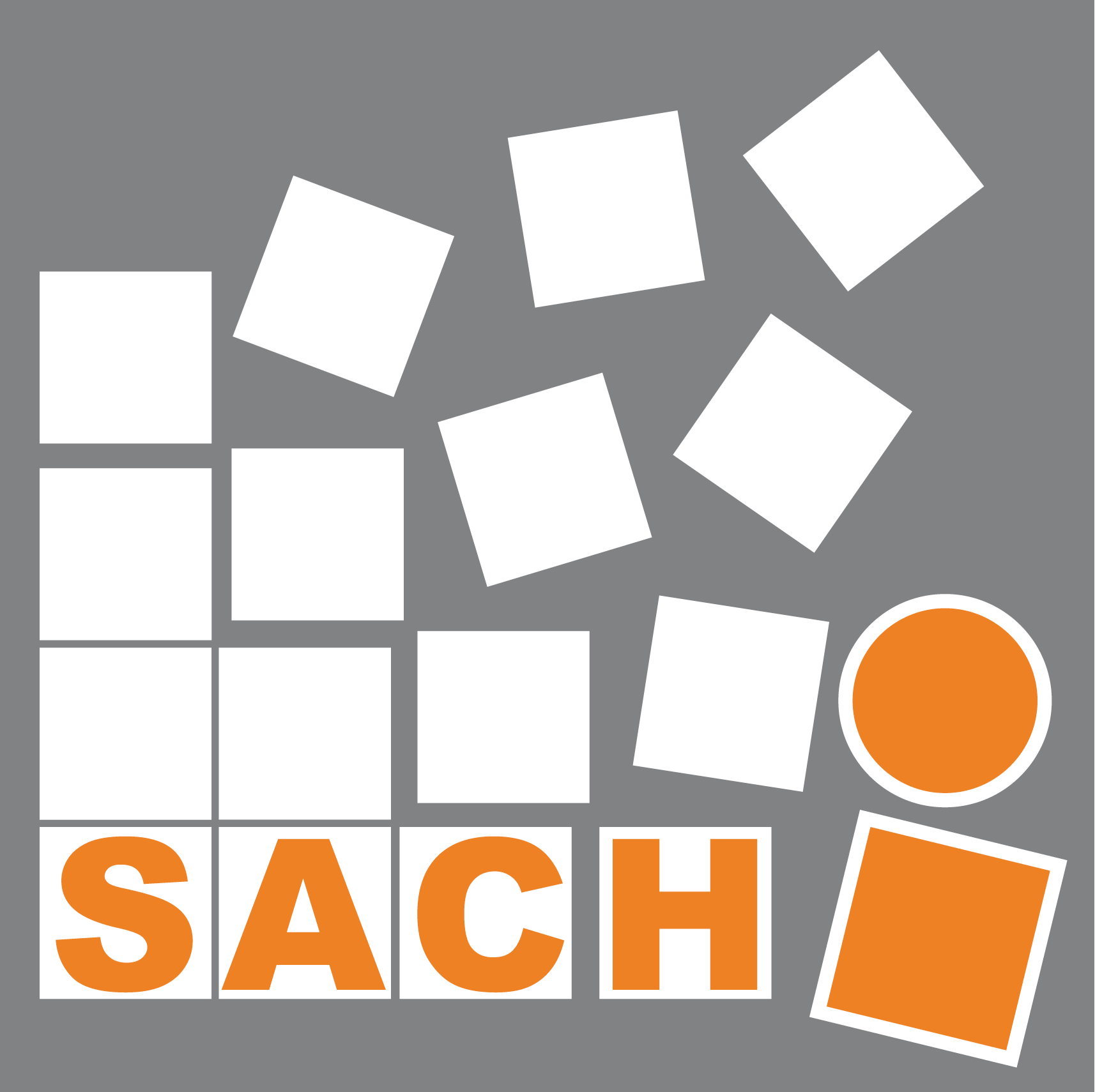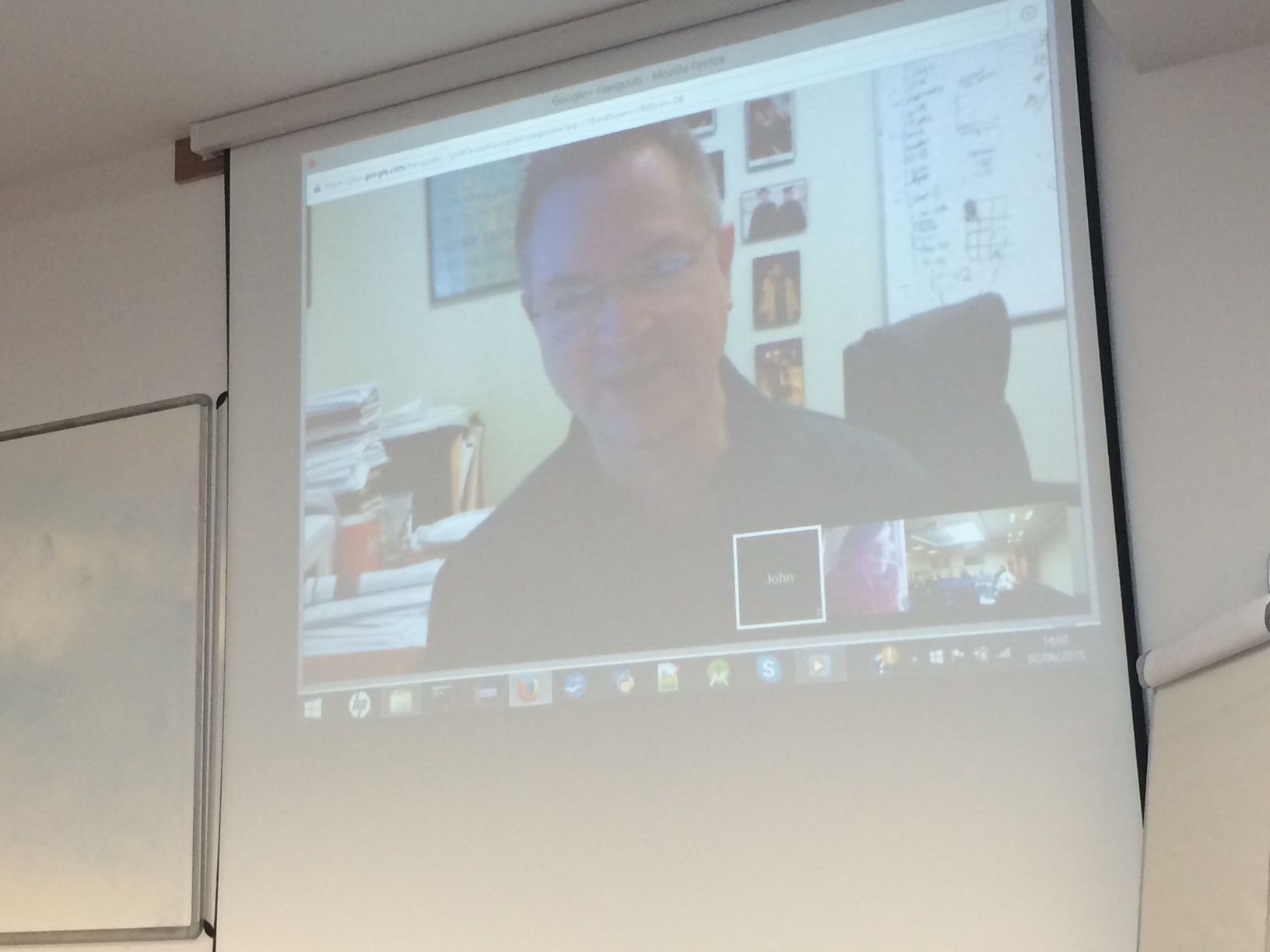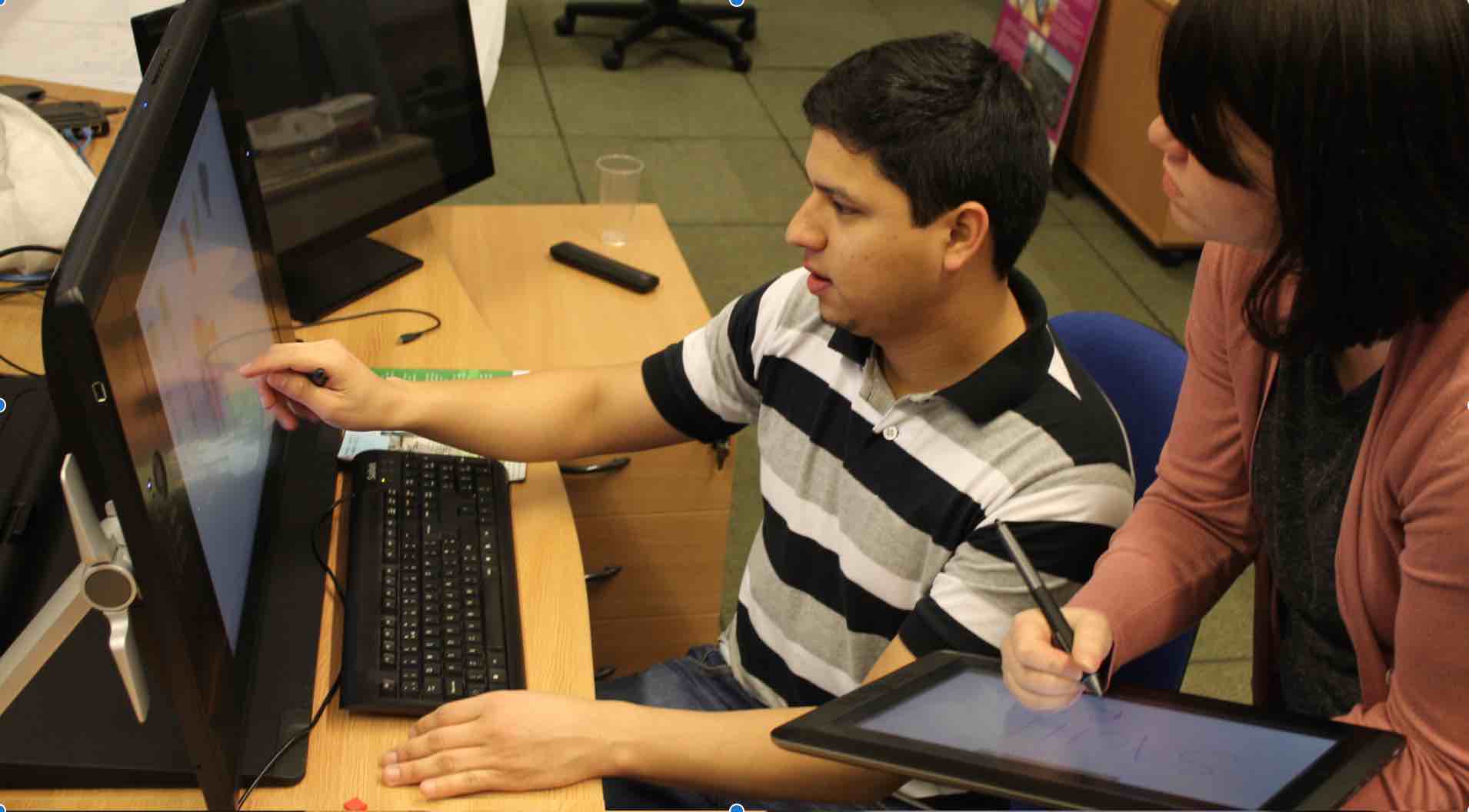<!–Speaker: John Stasko, Georgia Institute of Technology
Date/Time: 2-3pm June 2, 2015
Location: CS1.33a, University of St Andrews–>
Abstract:
As the field of information visualization matures, researchers are able to reflect on, and perhaps even question, some long-accepted notions from the area. In this talk, I focus on three such notions:
* Representing network data through force-directed node-link diagrams
* Focusing on visual representation first and foremost
* Evaluating visualizations through user studies and experiments
Although these ideas clearly have value as evidenced by their acceptance and longevity, I have begun to question the wisdom of each. In this talk I’ll explain my concerns about these notions and I’ll suggest a new, alternative approach to each as well. To support these arguments, I will describe a number of research projects from my lab that illustrate and exemplify the new approach.
Bio:
John received the B.S. degree in Mathematics at Bucknell University in Lewisburg, Pennsylvania (1983) and Sc.M. and Ph.D. degrees in Computer Science at Brown University in Providence, Rhode Island (1985 and 1989). He joined the faculty at Georgia Tech in 1989, and he is presently a Professor in the School of Interactive Computing in the College of Computing. His primary research area is human-computer interaction, with a focus on information visualization and visual analytics. John is a senior member of the ACM and IEEE. He was named an ACM Distinguished Scientist in 2011 and an IEEE Fellow in 2014. He also received the 2012 IEEE VGTC Visualization Technical Achievement Award. In 2013 John served as General Chair of the IEEE VIS conferences in Atlanta, and he was named an Honorary Professor in the School of Computer Science at the University of St. Andrews in Scotland.
This seminar is part of our ongoing series from researchers in HCI. See here for our current schedule.
News
Visualizing and writing variable-free compositional relational programs.
<!–Speaker: Gorkem Pacaci, Uppsala University
Date/Time: 2-3pm May 20, 2015
Location: JC1.33a, University of St Andrews–>
Abstract:
Representing argument binding in compositional relational programs is an issue due to the syntactic problems. We first present our former research on using visualization to overcome this problem, and relevant user studies, and go on to discuss our recent work on syntactic improvements in solving the same problem. We are looking forward to feedback on this early stage research.
Bio
Gorkem studied his masters degree in Abertay Dundee in Computer Games Technology, delivering a thesis on Optimizing collision detection in games. After working in games for a while, he started studying towards a doctorate degree in Uppsala University, Sweden. His study focuses on the representation of relational programming languages
Once again, members of SACHI are presenting a number of papers and other works at this year’s CHI in Seoul, South Korea. The schedule below will allow you to see a sample of the Human-Computer Interaction research from the University of St Andrews.
Paper (Best paper): VelociTap: Investigating Fast Mobile Text Entry using Sentence-Based Decoding of Touchscreen Keyboard Input [ACM DL]
Session: How Fast Can you Type on your Phone?
When: Monday 16.30-17.50
Where: 402
Teaser Video
Paper: Performance and User Experience of Touchscreen and Gesture Keyboards in a Lab Setting and in the Wild [ACM DL]
Session: How Fast Can you Type on your Phone?
When: Monday 16.30-17.50
Where: 402
Paper: MultiFi: Multi Fidelity Interaction with Displays on and Around the Body [ACM DL]
Session: Multi-Device Interaction
When: Thursday 14.30-15.50
Where: 401
Teaser Video (download paper and other files here)
AltCHI Paper: The Broken Dream of Pervasive Sentient Ambient Calm Invisible Ubiquitous Computing [ACM DL]
Session: Augmentation
When: Monday 11.30-12.50
Where: 308
Teaser Video
Furthermore, Miguel Nacenta is on the subcommittee for Interaction Using Specific Capabilities or Modalities, and Uta Hinrichs is on the subcommittee for Design. Per Ola Kristensson, who is now an honorary associate and external member of SACHI, is on the subcommittee for Interaction Techniques and Devices, whilst also being co-organiser of the two workshops below.
Workshop: Text Entry on the Edge
When: Saturday 08.00-17.00
Where: 325
Workshop Link
Workshop: Principles, techniques and perspectives on optimization and HCI.
When: Sunday 08.00-17.00
Where: 324
Workshop Link
Members of SACHI also contributed to the Scottish HCI welcome party supported by the SICSA HCI theme which was a great success. Last but not least, Aaron Quigley is one of the conference session chairs while Shyam Reyal will be a Student Volunteer throughout the conference at this year’s CHI.
SICSA members at the Scottish HCI party
<!–Speaker: Mel Woods, University of Dundee
Date/Time: 2-3pm April 28, 2015
Location: CS1.33a, University of St Andrews–>
Abstract:
Blue heritage plaques pepper the UK landscape expounding officially validated narratives celebrating past events, people, and buildings. This seminar will discuss a novel method that draws on this specific cultural context to generate reflective, nano-stories, documenting them through populating a place, physical space, and an online data repository. The guerrilla blue plaque method was designed to support people to reflect on possible futures, in this instance the theme of future cities. The seminar will demonstrate how using critical design artefacts can help support understanding of future hopes, needs, and goals for individuals and communities. It will also discuss the method as a feedback mechanism for participatory design, citizen engagement and emergent outcomes from the latest deployment.
This work was initially developed as part of a UK arts and digital media festival and exhibited recently at Microsoft Research Lab, Cambridge at RTD 2015.
Bio:
Mel is Reader at Duncan of Jordanstone College of Art and Design, University of Dundee. In her research she has developed and explored interaction between people to support discovery, foster creativity and affect. Throughout her academic career she has sustained a critical enquiry in art and design, creating digital artefacts, interfaces, prototypes and exhibits using novel methods and evaluation techniques.
This seminar is part of our ongoing series from researchers in HCI. See here for our current schedule.
<!–Speaker: Nicolai Marquardt, University College London
Date/Time: 1-2pm April 13, 2015
Location: CS1.33a, University of St Andrews–>
Abstract:
Despite the ongoing proliferation of devices and form-factors such as tablets and electronic whiteboards, technology often hinders (rather than helps) informal small-group interactions. Whereas natural human conversation is fluid and dynamic, discussions that rely on digital content—slides, documents, clippings—often remain hindered due to the awkwardness of manipulating, sharing, and displaying information on and across multiple devices. Addressing these shortcomings, in this talk I present our research towards fluid, ad-hoc, minimally disruptive techniques for co-located collaboration by leveraging the proxemics of people as well as the proxemics of devices. In particular, I will demonstrate a number of cross-device interaction techniques—situated within the research theme of proxemic interactions—that support nuanced gradations of sharing. I will also introduce different novel hybrid sensing approaches enabling these interaction techniques and discuss future research directions.
Bio:
Nicolai Marquardt is Lecturer in Physical Computing at University College London. At the UCL Interaction Centre he is working in the research areas of ubiquitous computing, physical user interfaces, proxemic interactions, and interactive surfaces. He is co-author of the books Proxemic Interactions: From Theory to Practice (Morgan & Claypool 2015) and Sketching User Experiences: The Workbook (Elsevier, Morgan Kaufmann 2012).
This seminar is part of our ongoing series from researchers in HCI. See here for our current schedule.
Prof. Aaron Quigley from the University of St Andrews is giving a talk on Friday 6th March. The talk will take place in Otaniemi in the TUAS building at 14:00.
TIME
Friday 6th March, 14:00-15:00
PLACE
TUAS
TITLE
Public-displays to the left of me, head-mounted displays to the right, Here I am, stuck with the mobile phone that is you!
ABSTRACT
Displays are all around us, on and around our body, fixed and mobile, bleeding into the very fabric of our day to day lives. Displays come in many forms such as smart watches, head-mounted displays or tablets and fixed, mobile, ambient and public displays. However, we know more about the displays connected to our devices than they know about us. Displays and the devices they are connected to are largely ignorant of the context in which they sit including knowing physiological, environmental and computational state. They don’t know about the physiological differences between people, the environments they are being used in, if they are being used by one or more people.
In this talk we review a number of aspects of displays in terms of how we can model, measure, predict and adapt how people can use displays in a myriad of settings. With modeling we seek to represent the physiological differences between people and use the models to adapt and personalize designs, user interfaces. With measurement and prediction we seek to employ various computer vision and depth sensing techniques to better understand how displays are used. And with adaptation we aim to explore subtle techniques and means to support diverging input and output fidelities of display devices. The talk draws on a number of studies from recent UMAP, IUI, AVI and CHI papers.
Our ubicomp user interface is complex and constantly changing, and affords us an ever changing computational and contextual edifice. As part of this, the display elements need to be better understood as an adaptive display ecosystem rather than simply pixels.
SHORT BIO
Professor Aaron Quigley is the Chair of Human Computer Interaction in the School of Computer Science at the University of St Andrews, UK. Aaron’s research interests include surface and multi-display computing, human computer interaction, pervasive and ubiquitous computing and information visualisation. He has published over 135 internationally peer-reviewed publications including edited volumes, journal papers, book chapters, conference and workshop papers and holds 3 patents. In addition he has served on over 80 program committees and has been involved in chairing roles of over 20 international conferences and workshops including UIST, ITS, CHI, Pervasive, UbiComp, Tabletop, LoCA, UM, I-HCI, BCS HCI and MobileHCI.
<!–Speaker: Nick Taylor, University of Dundee
Date/Time: 2-3pm March 10, 2015
Location: CS1.33a, University of St Andrews–>
Abstract:
Engagement with local issues is typically very low, despite digital technologies opening up more channels for citizens to access information and get involved than ever before. This talk will present research around the use of simple physical interfaces in public spaces to lower barriers to participation and engage a wider audience in local issues. It will also explore the potential for moving beyond top-down interventions to support sustainable grassroots innovation, in which citizens can develop their own solutions to local issues.
Bio:
Nick Taylor is a Lecturer and Dundee Fellow in the Duncan of Jordanstone College of Art and Design at the University of Dundee. His research interests involve the use of novel technologies in social contexts, particularly in communities and public spaces. This has involved the exploration of technologies to support civic engagement in local democracy, public displays supporting community awareness and heritage, as well as methods of engaging communities in design.
This seminar is part of our ongoing series from researchers in HCI. See here for our current schedule.
As part of a joint initiative to better understand pen+touch interaction in multi-touch devices, the SACHI lab has started a collaborative research endeavour with Wacom Co., Ltd. As a result, we recently welcomed some new arrivals to our lab: a Cintiq 24HD touch display and a Cintiq Companion Hybrid tablet.
This equipment has an ergonomic design with a high resolution screen which combines multi-touch and pen capabilities. We intend to use them to explore new interaction possibilities and provide insights that can be incorporated in the design process of new multi-touch devices. Specifically, we will study user interaction within the creative space of Complex Graphic Manipulations, and with children in the context of handwriting.
SACHI looks forward to keeping you up to date with our discoveries.
Speaker: Dr. Eve Hoggan, Aalto Science Institute and the Helsinki Institute for Information Technology
<!–Date/Time: December 2, 2014 / 2-3pm
Location: Jack Cole Building 1.33a, School of Computer Science
Title: Augmenting and Evaluating Communication with Multimodal Flexible Interfaces–>
Abstract:
This talk will detail an exploratory study of remote interpersonal communication using the ForcePhone prototype. This research focuses on the types of information that can be expressed between two people using the haptic modality, and the impact of different feedback designs. Based on the results of this study and other current work, the potential of deformable interfaces and multimodal interaction techniques to enrich communication for users with impairments will be discussed. This talk will also present an introduction to neurophysiological measurements of such interfaces.
Bio:
Eve Hoggan is a Research Fellow at the Aalto Science Institute and the Helsinki Institute for Information Technology HIIT in Finland, where she is vice-leader of the Ubiquitous Interaction research group. Her current research focuses on the creation of novel interaction techniques, interpersonal communication and non-visual multimodal feedback. The aim of her research is to use multimodal interaction and varying form factors to create more natural and effortless methods of interaction between humans and technology regardless of any situational or physical impairment.
More information can be found at www.evehoggan.com
This seminar is part of our ongoing series from researchers in HCI. See here for our current schedule.
Speaker: Dr. Jason Alexander, School of Computing and Communications, Lancaster University
<!–Date/Time: November 11, 2014 / 2-3pm
Location: Jack Cole Building 1.33a, School of Computer Science
Title: Supporting the Design of Shape-Changing Interfaces–>
Abstract:
Shape-changing interfaces physically mutate their visual display surface to better represent on-screen content, provide an additional information channel, and facilitate tangible interaction with digital content. The HCI community has recently shown increasing interest in this area, with their physical dynamicity fundamentally changing how we think about displays. This talk will describe our current work supporting the design and prototyping of shape-changing displays: understanding shape-changing application areas through public engagement brainstorming, characterising fundamental touch input actions, creating tools to support design, and demonstrating example implementations. It will end with a look at future challenges and directions for research.
Bio:
Jason is a lecturer in the School of Computing and Communications at Lancaster University. His primary research area is Human-Computer Interaction, with a particular interest in bridging the physical-digital divide using novel physical interaction devices and techniques. He was previously a post-doctoral researcher in the Bristol Interaction and Graphics (BIG) group at the University of Bristol. Before that he was a Ph.D. student in the HCI and Multimedia Lab at the University of Canterbury, New Zealand. More information can be found at http://www.scc.lancs.ac.uk/~jason/
This seminar is part of our ongoing series from researchers in HCI. See here for our current schedule.



